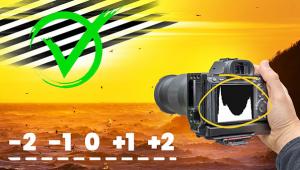TtV Photography; The Duaflex Lives Again Page 2
Building Your Contraption
“Contraption” is the official name given by TtVers to whatever you devise to go between your modern camera and the finder of your vintage camera. This can be a cardboard tube, a carefully crafted elongated cardboard box, a PVC pipe, or a complex wooden device able to take many different cameras and allow varying lengths from camera-to-camera. The goal here is to create a way to keep your modern camera the correct distance from the old camera finder while you shoot and at the same time block light from reflecting off the finder glass.
The easiest way to do this is to set your TLR on a table lying on its back looking up at the ceiling. Set your modern camera on the table looking into the finder of the TLR and determine the correct distance where your camera will focus on the finder image. For my Duaflex coupled to my Canon PowerShot S3 IS, I used a cardboard tube 61⁄4” long and 21⁄2” in diameter, which I affixed to the old Kodak with electrical tape. I painted the inside of the tube flat black to further prevent any reflections inside. Then, in Super Macro mode with spot metering set, I’m ready to go off shooting with my strange setup.
 |
|
|
You will need to decide which style of TtV artist you are. The purist shoots the photo and allows no digital manipulation except the possible cropping to a square format, depending on how the viewfinder image fills their camera frame. This does not even allow for flipping the image. Remember you’re shooting a mirror finder image, so everything is backward. Others believe some tweaking in Photoshop or other program is fine, although everyone seems to agree that cleaning up dust, dirt, mirror defects, etc. is against the idea of the work. I personally crop to square, being sure to leave the preferred black frame around the image area, and I flip the image. I then often punch up the color saturation and contrast to give it that retro punchy color look, and that’s about it.
 |
|
|
It is considered bad form to remove the viewfinder guts from the camera and install them in some sort of homemade attachment for your camera. A true TtVer keeps the camera intact so that it can be used as intended again someday. Just consider the old camera to be a special effects lens.
You will quickly learn that everything is in focus from a fraction of an inch in front of the TLR, to the distant scenery. Distortion from the magnifying finder glass can be used very creatively. Viewing will drive you nuts at first because everything is backward. If you’ve never worked with a TLR before you’ll learn new perspectives as the camera is below you rather than at eye level. That also makes it easy to get dramatic images from ground level.
 |
|
|
The number of photographers doing TtV photography has amazed me. If you’re a Flickr user on the Internet, do a search for TtV or Through the Viewfinder and you’ll find many groups of like-minded artists, some groups with thousands of members and tens of thousands of photos posted for your inspiration. You’ll find many variations on the theme as well, from the serious manipulators to the purists and everything in between. You’ll also find there are those out there who like to fake it, creating imitation TtV photographs in Photoshop. There is even an action set for Photoshop you can download to make faking it even easier. You’ll also find many photographers with galleries of TtV photos available for sale, usually in 6x6 or 9x9” print sizes, and plenty of buyers at hand looking for fun, retro-looking photos.
My advice is to hurry yourself to the back of the hall closet to resurrect the old family snapshooter, grab some black tape and cardboard, and get out and shoot!
- Log in or register to post comments

















































